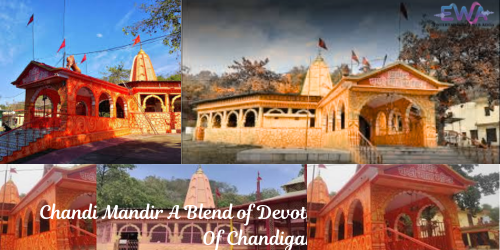Kandariya Mahadev Temple Is The Amazing Feat Of Architecture
Introduction
Kandariya Mahadev Temple
The most ornate and idol-style Nagara temple is the Kandariya Mahadeva Temple. Of all the temples in the Khajuraho group, this one is without a doubt the greatest. Lord Shiva is the patron of this temple. Within the sanctuary is a marble Shivalingam. The biggest and tallest landmark in Khajuraho is this Siva temple. It stands out as the most evolved of the central Indian building-style and one of the most majestic works of Indian architecture due to its mature plan and design, grand size and harmonious proportions, superb sculptural ornamentation, and architectural elaboration.

Who built kandariya mahadev Temple?
In the year 999 CE, King Dhandadeva of the Chandela dynasty built the Kandariya Mahadeva temple. Lord Shiva was honored in the temple.
Structure Of kandariya Mahadev Temple
The most elaborate Hindu temple in the medieval temple group in Khajuraho, Madhya Pradesh, India, is the Kandariya Mahadev Temple, which is located one kilometer from the Khajuraho Bus Stand. Of the Khajuraho temples in the Western Group, this one is the biggest and most exquisite.
Vidyadhara was a strong Chandela king who constructed the Kandariya Mahadev Temples, which are dedicated to Lord Shiva. It was built between the years of 1025 and 1050 AD. In 1019 AD, Vidyadhara, often called Bida, was a strong leader who engaged in combat with Mahmud of Ghazni. Mahmud had no choice but to return to Ghazni because this conflict was not over. In 1022, Mahmud attacked Vidyadhara once more. He launched an assault on Kalinjar Fort, but his siege of the fort proved fruitless. In order to commemorate his victory over Mahmud, Vidyadhara constructed the Kandariya Mahadev Temple.

Structure Of Kandriya Temple
The Kandariya Mahadev Temple’s architecture is very distinctive, spanning 6,500 square feet. It faces east and rises 117 feet above the earth. A steep set of steps leads up to the elevated platform where the temple is situated. The temple’s architecture is based on a standard five-component plan, which ends in a tower with 84 little copies, or spires. This is thought to represent Lord Shiva’s holy residence, Mount Kailash.
The temple’s chambers are arranged in a well-planned network between one another. The Mandapa, the center hall supported by pillars, is reached from the ardhamandapa, a rectangular hall located at the entrance. It returns to the Garbhagriha mentioned above.






